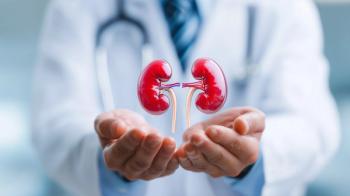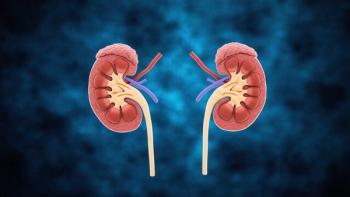
People With Chronic Kidney Disease Have a Weaker Sense of Saltiness. Adding Sweetness Seems To Compound the Problem. That Makes It Harder To Control Hypertension.
Difficulty tasting salt makes it harder to reduce sodium intake, a key strategy for controlling hypertension, which is a major risk factor for chronic kidney disease (CKD). Sweetness can make saltiness even harder to discern, a study found.
We love salt. So does the rest of the planet. Excess sodium consumption is associated with nearly 2 million deaths a year, according to the World Health Organization, from medical conditions ranging from cardiovascular disease to obesity, osteoporosis, some cancers, and kidney disease, all of them related to high blood pressure.
Most people consume more than twice the World Health Organization-recommended levels of sodium, a key ingredient in salt, despite the well-known risks. The food industry uses sodium for more than just taste, but most of us like that taste. Who doesn’t crave a salty snack at times? Which helps explain why we have trouble cutting back.
We also love the taste of sweetness and are consuming more and more substances that supply it every year. Sweetness, too, through the consumption of sugar, is responsible for a range of diseases starting with obesity.
The five tastes — salty, sweet, sour, bitter, and umami — are not typically encountered by themselves. They come in combinations and interact. Some may overpower others.
Interestingly, sweet and salty are the only tastes that are associated with significant disease and death. And they may be even worse in combination.
Sweetness can make it harder for many people to also detect saltiness — and much harder if they have chronic kidney disease, according to a
Corresponding author
People who were diagnosed with COVID-19 at the start or during the study were excluded from both groups, as were healthy subjects with lifestyle diseases like hypertension and diabetes or who routinely took any medication. CKD subjects with specific other conditions also were excluded.
The researchers first measured the concentrations at which participants were able to detect salty, sour and bitter tastes, as well as the threshold when the tastes became unpleasant, known as aversion. There were nine concentrations for salt (sodium chloride) and five each for sour (tartaric acid) and bitter (quinine hydrochloride).
The tests for those same tastes were later repeated with sweetness (sucrose) added, also in five concentrations.
Among the CKD patients, 79% indicated no aversion to salt at even the highest concentration, compared with 44% of the healthy subjects.
Adding sweetness significantly reduced salt aversion: 92% of those with CKD showed no aversion to high salt compared with 52% of healthy participants.
Sweetness also significantly reduced aversion to sour and bitter tastes among the CKD group, although neither decline was as great as for salt. Healthy subjects reported somewhat less aversion to sour taste and no difference for bitterness.
In addition to aversion, sweetness also reduced some participants’ ability to taste salt at all: 2% of healthy volunteers and 11% of people with CKD couldn’t recognize salt at the highest threshold.
The authors note several limitations to their study, including the small size of the CKD group and major demographic differences: the gender makeup of the two groups was reversed (CKD: 59% male; healthy volunteers: 59% female), and participants with chronic kidney disease were far older than the healthy volunteers (median: 66.5 vs. 38 years). The ability to distinguish tastes generally declines with age.
Their findings, nevertheless, may have broad implications.
“It is possible that adding sweetness to salt may have increased salt intake by reducing the avoidance of high salt concentrations. Therefore, it is extremely difficult to encourage salt reduction based on patients’ reduced sensitivity to saltiness,” the authors write, pointing out that CKD patients also often have impaired taste perception, making it hard for them to sense high salt concentrations regardless of sweetness.
They continue: “As the number of patients with lifestyle-related diseases increases worldwide, appropriate dietary intake, including salt reduction, will become increasingly crucial in the future.” To increase the ability to taste saltiness in food, “it is crucial to consider taste interactions,” they conclude, adding:
“Enhancing the perception of saltiness by reducing sweetness may be an effective strategy for reducing overall salt intake.”
Newsletter
Get the latest industry news, event updates, and more from Managed healthcare Executive.






















































